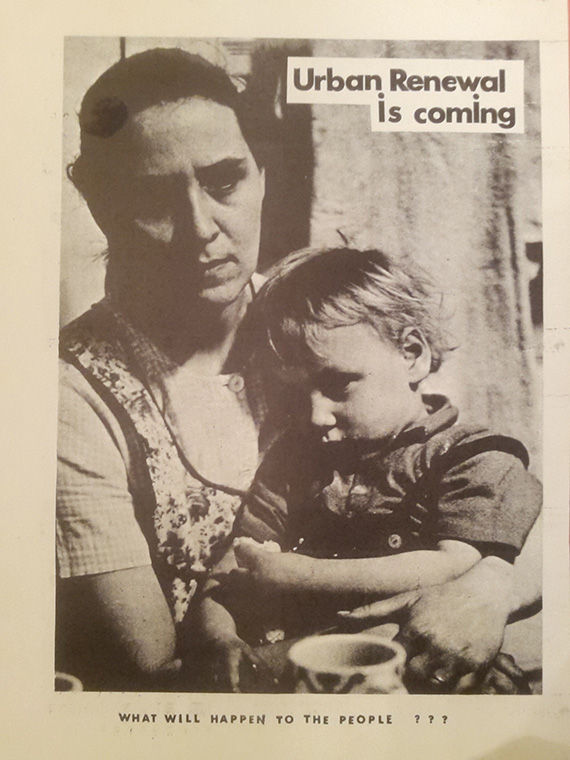Young Patriots’ notes from the underground resurface
JOIN Poster
October 27, 2014
The Young Patriots Organization, a Chicago political group from the 1960s, is resurfacing in the city after years of invisibility.
Originally based in Chicago’s Uptown neighborhood, the organization, which grew out of a radical project of the Students for a Democratic Society, Jobs or Income Now, is gaining notoriety with the new nonfiction book “A Step into America: Radical Organizing in Uptown, Chicago.” The book, which is an ongoing project, is being edited by Bill Keniston, an author and the nephew of a Young Patriots member, under the pen name Taylor Sparrow, with help from Young Patriot’s founding member, Hy Thurman, and other activists from the Civil Rights Movement. According to Thurman, a documentary is also being produced along with an exhibit set to be hosted at Columbia in November 2015.
Thurman started the project after the 2011 release of Amy Sonnie and James Tracy’s book “Hillbilly Nationalists, Urban Race Rebels, and Black Power: Community Organizing In Radical Times,” and Thurman said he was inspired to write his own version of the history.
“The book essentially came about when I started writing my vision of the history of the Young Patriots,” Thurman said. “I started doing that a couple of years ago, and it was initially going to be my book.… I had asked [Keniston] to help me edit and clean it up so I could publish it.”
Keniston, who also authored “A Problem of Memory: Stories to End the Racial Nightmare,” was brought in to help flesh out the material based on the advice of his uncle, who said he thought Thurman’s work merited more than just a single chapter in Sonnie and Tracy’s book, Keniston said.
As the pair was working on the book, they realized the story would be better if it was told through the voices of other people involved, and they thought people would be more apt to open up if Thurman was aboard, Keniston said.
“We both started to feel that the piece will be better if it includes other stories,” Keniston said. “I think it’s going to be like six to 10 different stories from people who were in different parts of this set of movements and projects [over the course] of 10 years in Uptown. The movement itself produced a huge amount of material.”
The objective behind the book, as well as the tentatively planned documentary and exhibit, is to relay an accurate description of an overlooked part of Chicago and the nation’s history.
“It’s a forgotten history that really hasn’t gotten published until this point because most of our records have been sealed for 25 years, but they’re open now,” Thurman said. “It’s a unique story, and it’s not fabricated because it’s exactly what happened, you know? It was the government turning on its own people at the time.”
Jakobi Williams, an associate professor in the Department of African American and African Diaspora Studies at Indiana University, said members of groups like the Young Patriots Organization and the original Rainbow Coalition are overlooked in the legacy of activism in America. Williams said he held a symposium at Indiana University for the 45th anniversary of the founding of the Rainbow Coalition, not to be mistaken with Jesse Jackson’s Rainbow/PUSH organization. in March to shed more light on these forgotten groups.
“They are footnotes in history,” Williams said. “There’s a long legacy of the kind of work and activism that they were doing that we as a popular society are unaware of.”
Williams said these groups are notable for their methods of fighting racism, police brutality and housing discrimination.
“[Chicago was] then and still is the most racially [and] residentially segregated city in America,” Williams said. “So you get these southern, white migrants, confederate flag-wearing white boys from the South joining forces and taking leadership from these black youth, the Black Panther Party. It blows folks’ minds.”
Williams said the efforts put forth by the Rainbow Coalition can still be seen in America today.
“For instance, when [Barack] Obama was elected president, the mainstream media was talking about this ‘new phenomenon,’ the way in which Obama was able to bring these coalitions together, [but] it’s not a new phenomenon,” Williams said. “It’s not by accident that the first black president that comes out of Chicago uses these coalitions. These folks had entrenched this kind of politics way back in the 1960s.”
Both Thurman and Keniston said they hope the book, along with the other efforts to keep the story of the Young Patriots alive, will serve as a guide for younger generations who choose to participate in politics.
“There’s something about imagination and what we are willing to believe might be possible…” Keniston said. “His invitation of ‘Go ahead, take a step into America, try to find a way to engage with people totally marginalized…’ there’s very little of that that I see happening right now.”








